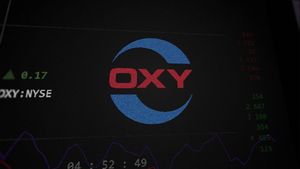
The global landscape of cloud and data center infrastructure is currently experiencing an unprecedented period of dynamism, fueled by the insatiable demands of artificial intelligence (AI), widespread digital transformation, and the relentless expansion of cloud computing. This robust growth has triggered significant stock movements among key technology players, signaling a transformative era for the sector and presenting both immense opportunities and considerable challenges for investors and industry stakeholders.
As of October 2, 2025, several prominent companies operating within this critical infrastructure space are witnessing notable shifts in their market valuations. These movements underscore the intense investor interest and the rapid evolution within a market projected to reach a staggering US$160.4 billion by 2031. The focus is squarely on companies that can deliver scalable, high-performance, and AI-optimized solutions, leading to a highly competitive and fluid investment environment.
A Deep Dive into the Infrastructure Revolution
The current market effervescence in cloud and data center infrastructure is a direct consequence of several converging technological megatrends. The explosion of AI and Big Data analytics requires unprecedented computational power and storage, pushing data centers to evolve rapidly with higher rack densities and advanced cooling solutions like direct-to-chip liquid cooling. Concurrently, the proliferation of IoT devices and the rollout of 5G networks are driving the need for edge computing, bringing processing closer to the data source to enable low-latency applications. These factors collectively demand continuous, substantial investment in new and upgraded infrastructure.
Recent stock movements reflect the market's response to these trends and specific corporate developments. GDS Holdings (NASDAQ: GDS; HKEX: 9698), a leading data center developer in China and Southeast Asia, saw its shares gap up on October 2, 2025, opening at $42.43. This follows strong Q2 2025 financial results, with revenue increasing by 12.4% year-over-year, and the successful completion of a C-REIT IPO on the Shanghai Stock Exchange, raising approximately US$335 million. The IPO was 166 times oversubscribed, indicating robust investor confidence in its stabilized assets and growth strategy. GDS also released its 2024 ESG Report, highlighting a 40% renewable energy usage rate and improved Power Usage Effectiveness (PUE) to 1.24, addressing critical sustainability concerns in the sector.
Perhaps the most dramatic recent movement comes from Nebius Group (NASDAQ: NBIS), an AI infrastructure company that has seen its stock price surge by an astounding 422.81% over the last year, reaching around $125.16 USD as of October 2, 2025. The stock gapped up significantly before market open, with after-hours trading showing a 45% increase following the announcement of a monumental multi-year agreement with Microsoft. This deal, valued at $17.4 billion over five years (potentially expanding to $19.4 billion), will see Nebius provide AI infrastructure, including over 100,000 of Nvidia's latest GB300 chips, from its new Vineland, New Jersey data center starting in late 2025. This deal, combined with Q2 2025 revenue growth of 625% year-over-year, underscores Nebius's pivotal role in the AI infrastructure build-out.
Bentley Systems (NASDAQ: BSY), a provider of infrastructure software solutions, also experienced a pre-market jump of 6.99% on October 2, 2025, to $56.00. This positive momentum was bolstered by the announcement of its inclusion in the S&P MidCap 400 index, effective October 6, 2025 – a move that typically increases visibility and institutional investment. The company reported strong Q2 2025 financial results with total revenues up 10.2% year-over-year, demonstrating sustained demand for its software in infrastructure project delivery.
In the critical supply chain for semiconductor manufacturing, VAT Group (SIX: VACN), a global leader in high-end vacuum valves, reported strong operational performance for the first half of 2025, with sales increasing by 24% year-on-year. While its stock closed down 2.6% on July 23, 2025, after half-year results, the company maintains a positive outlook, anticipating continued record Wafer Fabrication Equipment (WFE) spending. Similarly, ASM International (EURONEXT: ASM; OTCQX: ASMIY), a semiconductor equipment specialist, has seen its shares sprint ahead by about 81.7% over the last year on the OTCQX, despite a recent -0.78% decrease on Euronext as of October 2, 2025. ASM recently launched its PE2O8 silicon carbide epitaxy system and reaffirmed its 2025 revenue goal, demonstrating its commitment to expanding beyond traditional logic and memory markets into high-growth areas like power semiconductors.
Winners and Losers in the Infrastructure Race
The current market dynamics are creating clear winners and losers, reshaping competitive landscapes. Companies like Nebius Group (NASDAQ: NBIS) are unequivocally positioned as major beneficiaries. Its massive deal with Microsoft for AI infrastructure solidifies its status as a critical enabler of the AI revolution, securing long-term revenue streams and validating its full-stack AI infrastructure strategy. This positions Nebius for sustained growth, attracting further investment and partnerships. Similarly, GDS Holdings (NASDAQ: GDS; HKEX: 9698) stands to gain significantly from the continued digital transformation in China and Southeast Asia, particularly with its successful C-REIT IPO providing capital for expansion and its focus on sustainability appealing to a broader investor base.
For Bentley Systems (NASDAQ: BSY), the ongoing infrastructure build-out, both physical and digital, directly translates into increased demand for its software solutions. As more data centers are designed and constructed, and as digital twins become standard for infrastructure management, Bentley's market position strengthens. Its inclusion in the S&P MidCap 400 is a testament to its growing market capitalization and stability, likely attracting more institutional investment.
Companies like VAT Group (SIX: VACN) and ASM International (EURONEXT: ASM; OTCQX: ASMIY), while operating upstream in the semiconductor equipment supply chain, are also direct beneficiaries. The surging demand for AI chips and high-performance computing components drives the need for advanced manufacturing equipment and vacuum technologies. Their ability to innovate and provide critical components for wafer fabrication ensures their continued relevance and profitability. However, these companies are also susceptible to cyclical downturns in the broader semiconductor market, as indicated by ASM's lowered FY25 growth outlook due to near-term cyclical weakness, despite strong long-term prospects.
Potential "losers" or those facing significant challenges include traditional data center providers unable to rapidly adapt to the specialized requirements of AI workloads, such as higher power densities and advanced cooling. Companies with outdated infrastructure or those struggling with power constraints and permitting delays could find themselves at a disadvantage. Furthermore, smaller players without the capital to invest in next-generation AI-optimized facilities may struggle to compete with hyperscalers and specialized AI infrastructure providers.
Wider Significance and Industry Transformation
This dynamic market for cloud and data center infrastructure is not merely a series of stock movements; it represents a fundamental transformation of the digital economy. The shift towards AI-centric infrastructure is the most profound trend, demanding unprecedented investments in GPUs, specialized chips, and high-density, liquid-cooled data centers. This is reshaping supply chains, with a premium placed on providers who can deliver bespoke, scalable, and energy-efficient solutions. Edge computing, driven by 5G and IoT, is another critical trend that will decentralize data processing and create new infrastructure hubs closer to end-users.
The ripple effects are far-reaching. Hyperscale cloud providers like Microsoft, Amazon (NASDAQ: AMZN), and Google (NASDAQ: GOOGL) are both drivers and beneficiaries, but also face the immense capital expenditure required to keep pace. Their reliance on partners like Nebius Group highlights a growing trend of strategic alliances to meet demand. Competitors in the data center space will need to differentiate through specialized offerings, sustainability initiatives, and rapid deployment capabilities. Regulatory and policy implications are also emerging, particularly concerning energy consumption and environmental impact. The increasing power demands of AI data centers are putting pressure on electricity grids and driving calls for more sustainable practices, including the use of renewable energy and advanced cooling technologies. Permitting delays and land acquisition challenges further complicate expansion.
Historically, periods of rapid technological advancement, such as the dot-com boom or the early days of cloud computing, have seen similar infrastructure build-outs and corresponding market volatility. However, the current AI-driven surge is unique in its intensity and the specialized nature of the infrastructure required, potentially leading to a more concentrated market among a few highly capable providers.
The Road Ahead: Navigating a Future Defined by AI
Looking ahead, the short-term outlook for cloud and data center infrastructure is characterized by continued aggressive investment, particularly in AI-optimized facilities. The demand for processing power and storage will only intensify, pushing the boundaries of current data center designs. Companies that can quickly deploy capacity, secure access to advanced chips (like Nvidia's GB300), and innovate in cooling and energy efficiency will be at a significant advantage.
Long-term possibilities include further market consolidation, with larger players acquiring smaller, specialized firms to gain technological expertise or regional market share. We may also see the emergence of entirely new infrastructure paradigms, such as quantum computing data centers, though these are still in nascent stages. Strategic pivots will be essential, with a strong emphasis on modularity, flexibility, and sustainability. Data center operators will need to adapt to evolving power requirements and regulatory pressures, potentially exploring new energy sources and waste heat recovery systems.
Market opportunities will emerge in specialized AI hardware, advanced networking, and innovative cooling solutions. Challenges will include securing reliable power supplies, navigating complex permitting processes, and attracting skilled talent to manage increasingly sophisticated infrastructure. Potential scenarios range from sustained, robust growth driven by continuous AI innovation to periods of oversupply or market correction if demand projections do not materialize or if technological shifts render current infrastructure obsolete. However, given the foundational nature of AI, the former seems more likely.
Comprehensive Wrap-up: Investing in the Digital Backbone
The current dynamic in the cloud and data center infrastructure market underscores its pivotal role as the backbone of the modern digital economy, now more than ever driven by AI. Key takeaways include the unprecedented demand for AI-optimized infrastructure, the strategic importance of sustainability, and the significant capital flows into companies capable of meeting these evolving needs. The recent stock movements of GDS Holdings, Nebius Group, Bentley Systems, VAT Group, and ASM International are clear indicators of a sector undergoing rapid transformation and robust growth.
Moving forward, the market will likely remain highly competitive and innovative. Investors should closely watch for continued advancements in AI hardware, the development of more efficient cooling and power solutions, and the strategic partnerships forged between infrastructure providers and hyperscalers. The ability of companies to scale rapidly, secure critical supply chains, and demonstrate a commitment to environmental sustainability will be key determinants of long-term success. The narrative of digital transformation is now irrevocably intertwined with the story of AI infrastructure, making this sector a critical area for observation and investment in the coming months and years.
This content is intended for informational purposes only and is not financial advice.
Date: October 2, 2025






